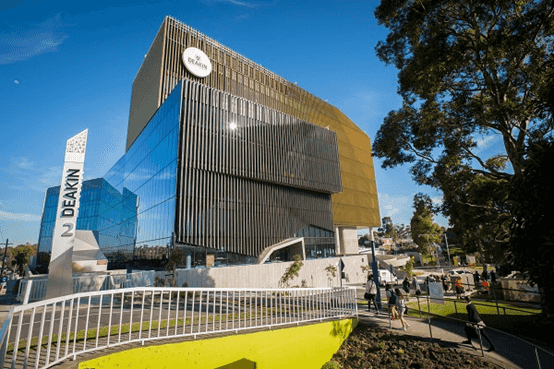Workshop Title:
Securing the Future: Empowering Cyber Defense with Machine Learning and Deep Learning
Date:
December 3rd, 2024 (UTC +11)
Organizer:
Deakin University
Keywords:
- Intrusion Detection
- Cybersecurity
- Machine Learning
- Deep Learning
- Cyber Defense
Workshop Chair:
Personal Bio:
Dr. Ansam Khraisat is a cybersecurity lecturer and member of Centre for Cyber Resilience and Trust (CREST). School of Info Technology Deakin University, Australia. She is a cyber security researcher and practitioner with industry and academic experience. She worked as a Postdoctoral Research Fellow at the RMIT Centre of Cyber Security Research and Innovation and as a lecturer of Cyber Security at RMIT University, Australia. Ansam is a cyber security researcher and practitioner with industry and academic experience. She received her PhD degree in cybersecurity from the Federation University of Australia, School of Science, Information Technology and Engineering. Dr. Ansam's research is multidisciplinary that focuses on cyber security with a focus on cybercrime detection and prevention. She is a member of the woman in Cybersecurity. She presented at many invited keynotes talks and panels, at conferences and venues nationally and internationally.
Workshop Committee Members:
Dr. Muna Al-Hawawreh Deakin university [email protected]
Workshop Description:
Background:
The exponential growth of digital data and interconnected systems has fueled a parallel rise in cyber threats, ranging from targeted attacks to sophisticated malware. Traditional cybersecurity methods, reliant on static rules and signatures, often struggle to keep pace with the evolving tactics of cybercriminals. In response, the fusion of artificial intelligence (AI) and cybersecurity has emerged as a potent strategy to fortify defenses. Machine learning (ML) and deep learning (DL) techniques, capable of discerning complex patterns from vast datasets, offer a dynamic and proactive approach to threat detection and mitigation. By leveraging AI algorithms to analyze network traffic, identify anomalies, and predict potential threats, organizations can bolster their resilience against cyber attacks in an increasingly interconnected and digitally reliant world.
Goal/Rationale:
The goal of integrating machine learning and deep learning techniques into cybersecurity is to enhance the effectiveness and efficiency of threat detection and response mechanisms. By harnessing the power of AI-driven analytics, organizations can augment their traditional cybersecurity measures with adaptive and proactive defenses. The rationale behind this approach lies in the recognition that static and rule-based systems are no longer sufficient to combat the ever-evolving landscape of cyber threats. ML and DL techniques offer the capability to analyze vast amounts of data in real-time, identify subtle patterns indicative of malicious activity, and enable rapid response to security incidents. Ultimately, the goal is to empower organizations to stay one step ahead of cyber adversaries and safeguard their digital assets with greater precision and agility.
Scope and Information for Participants:
Participants in this workshop will gain a comprehensive understanding of machine learning and deep learning techniques as applied to cybersecurity. The scope of the workshop covers fundamental concepts in ML and DL, practical applications in threat detection, anomaly detection, and malware analysis, as well as hands-on experience in implementing these techniques in real-world cybersecurity scenarios. Participants will learn best practices for data preprocessing, model selection, and evaluation metrics, equipping them with the knowledge and skills needed to integrate ML/DL into their organization's cybersecurity workflows effectively. Additionally, the workshop will explore emerging trends and future directions in ML/DL-enabled cybersecurity, providing participants with valuable insights into staying ahead of evolving cyber threats.
Venue:
221 Burwood Highway, Melbourne, Victoria, 3125, Australia

VISA:
https://immi.homeaffairs.gov.au/home
In order to ensure the information is correct and up to date, there may be changes which we are not aware of. And different countries have different rules for the visa application. It is always a good idea to check the latest regulations in your country. You should confirm details with your local Consular Office. This page just gives some general information of the visa application.
Australia Visa Information
Do I need a visa to enter Australia?
Unless you are an Australian citizen, you will need a valid Australian visa to enter the country. New Zealand passport holders can apply for a visa upon arrival in the country. All other passport holders, regardless of age, must apply for a visa before leaving home. You can apply for a range of Australian visa types, including tourist visas and working holiday visas, at your nearest Australian Embassy or Consulate. You can also apply for certain types of visas on the Australian Department of Home Affairs website.
There are different Australian visa types available for travelers to Australia. Knowing which Australian visa to apply for depends on the length of your stay, your passport and the purpose of your visit. You'll also need to meet certain financial and medical requirements, be outside of Australia when applying and maintain health insurance for the duration of your stay.
Electronic Travel Authority Visa (subclass 601)
This visa allows you to visit Australia as many times as you want, for up to a year, and stay for three months each visit. This visa is available to passport holders from a number of countries and regions, who live outside Australia. A step-by-step guide on how to apply is here.
E-Visitor (subclass 651)
This is a free visa for multiple visits to Australia for tourism or business purposes for up to three months at a time within a 12-month period. This visa is available to passport holders from a number of European countries and it cannot be extended.
Visitor visa (subclass 600)
The Visitor visa allows you to visit Australia, either for tourism or business purposes. It is open to all nationalities. Generally, a period of stay of up to three months is granted, but up to 12 months may be granted in certain circumstances. Applicants will have to pay a fee to submit their application.
How can I apply for an Australian tourist visa?
The application process may differ depending on which visa you need. You can only apply for the Electronic Travel Authority visa (subclass 601) through the Australian ETA app. A step-by-step guide on how to apply is located here.
For other visas, you can apply online by creating an ImmiAccount and completing the application process. Be sure to submit your application well in advance of your travel date to allow enough time for processing. You may be asked to provide further supporting information. You will be notified in writing if your tourist visa is approved and it will be digitally linked to your passport.
For more information on different visa types, and Australian visa requirements including how to apply for an Australian visa, visit the Department of Home Affairs website.





